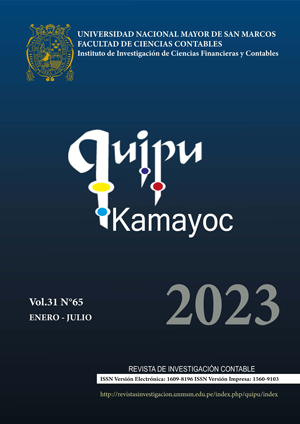Inflation in Peru as a response to international energy and food prices shocks
DOI:
https://doi.org/10.15381/quipu.v31i65.24508Keywords:
price index, commodities, shocks, structural VARAbstract
Objective: To determine the contribution of international energy and food price shocks in Peru’s inflation during the period 2002-2022. Method: A structural autoregressive vector model (SVAR) was estimated following the reflection of Blanchard and Quah so that it reflected the behavior of a small and open economy such as Peru's. In addition, the Granger causality test, cumulative impulse-response functions, and variance decomposition were used to achieve the goal. Results: The oil, grain and fertilizer price shocks are weakly inflationary, while the ocean freight shocks are weakly deflationary. In addition, these shocks explain slightly the need for inflation. Conclusion: In the long term, the contribution of international energy and food price shocks on domestic inflammation has been significant and permanent; however, the effects are weak and heterogeneous. This would be associated with good management of monetary policy by the Central Reserve Bank of Peru.
Downloads
Downloads
Published
Issue
Section
License
Copyright (c) 2023 Paul Christian Espinoza Ipanaque

This work is licensed under a Creative Commons Attribution 4.0 International License.
AUTHORS RETAIN THEIR RIGHTS:
a. Authors retain their trade mark rights and patent, and also on any process or procedure described in the article.
b. Authors retain their right to share, copy, distribute, perform and publicly communicate their article (eg, to place their article in an institutional repository or publish it in a book), with an acknowledgment of its initial publication in Quipukamayoc .
c. Authors retain theirs right to make a subsequent publication of their work, to use the article or any part thereof (eg a compilation of his papers, lecture notes, thesis, or a book), always indicating the source of publication (the originator of the work, journal, volume, number and date).





























